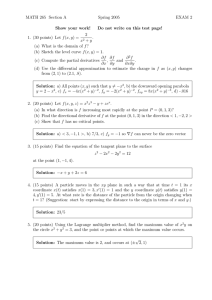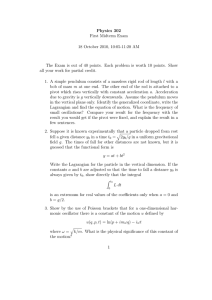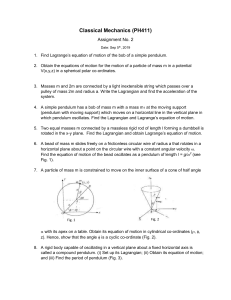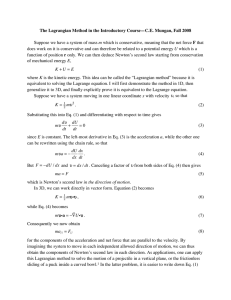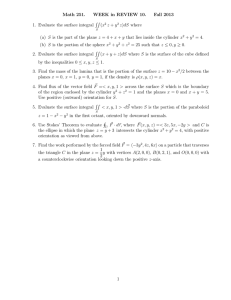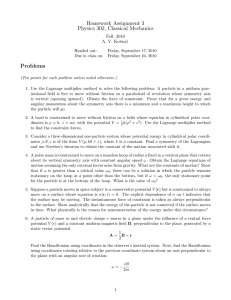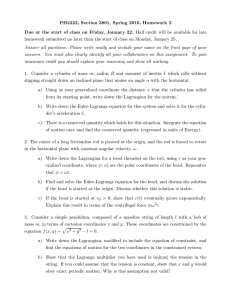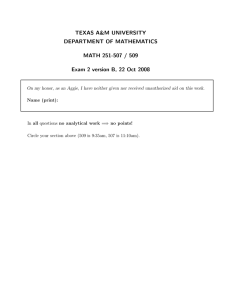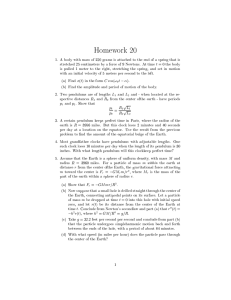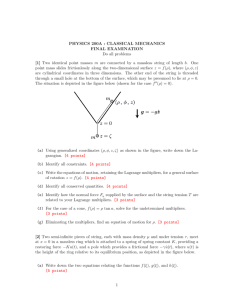Homework Assignment 2 Physics 302, Classical Mechanics Problems Fall 2010
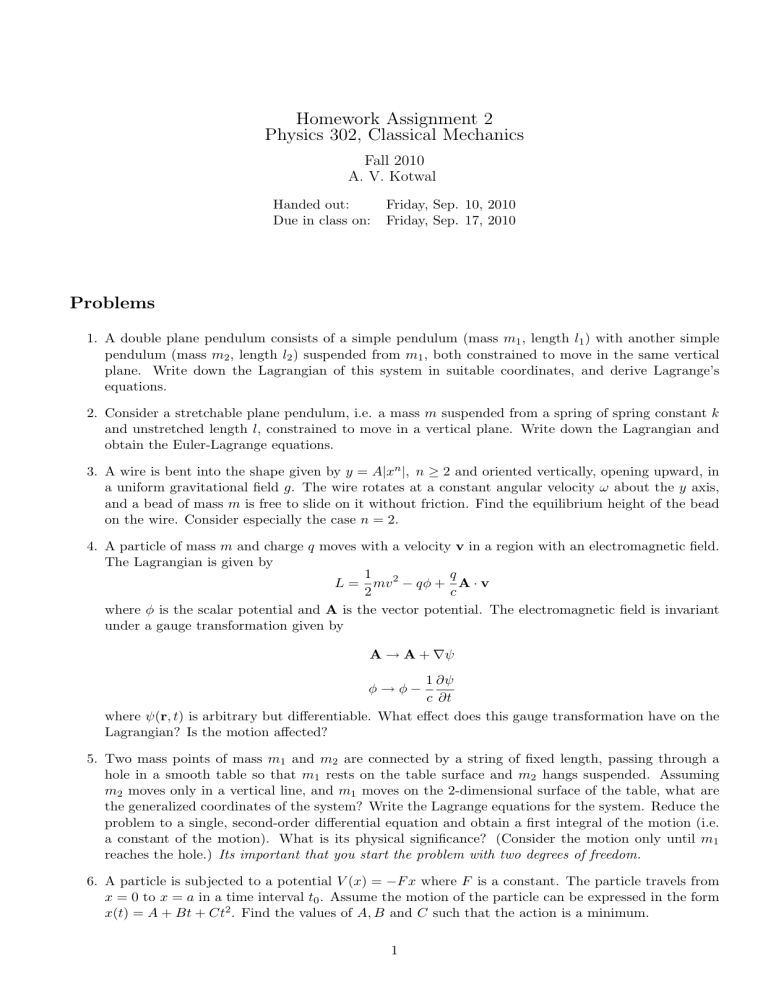
Homework Assignment 2
Physics 302, Classical Mechanics
Fall 2010
A. V. Kotwal
Handed out: Friday, Sep. 10, 2010
Due in class on: Friday, Sep. 17, 2010
Problems
1. A double plane pendulum consists of a simple pendulum (mass m
1
, length l
1
) with another simple pendulum (mass m
2
, length l
2
) suspended from m
1
, both constrained to move in the same vertical plane. Write down the Lagrangian of this system in suitable coordinates, and derive Lagrange’s equations.
2. Consider a stretchable plane pendulum, i.e. a mass m suspended from a spring of spring constant k and unstretched length l , constrained to move in a vertical plane. Write down the Lagrangian and obtain the Euler-Lagrange equations.
3. A wire is bent into the shape given by y = A | x n | , n ≥ 2 and oriented vertically, opening upward, in a uniform gravitational field g . The wire rotates at a constant angular velocity ω about the y axis, and a bead of mass m is free to slide on it without friction. Find the equilibrium height of the bead on the wire. Consider especially the case n = 2.
4. A particle of mass m and charge q moves with a velocity v in a region with an electromagnetic field.
The Lagrangian is given by
L =
1
2 mv
2
− qφ + q c
A · v where φ is the scalar potential and A is the vector potential. The electromagnetic field is invariant under a gauge transformation given by
A → A + ∇ ψ
1 ∂ψ
φ → φ − c ∂t where ψ ( r , t ) is arbitrary but differentiable. What effect does this gauge transformation have on the
Lagrangian? Is the motion affected?
5. Two mass points of mass m
1 and m
2 are connected by a string of fixed length, passing through a hole in a smooth table so that m
1 rests on the table surface and m
2 hangs suspended. Assuming m
2 moves only in a vertical line, and m
1 moves on the 2-dimensional surface of the table, what are the generalized coordinates of the system? Write the Lagrange equations for the system. Reduce the problem to a single, second-order differential equation and obtain a first integral of the motion (i.e.
a constant of the motion). What is its physical significance? (Consider the motion only until m
1 reaches the hole.) Its important that you start the problem with two degrees of freedom.
6. A particle is subjected to a potential V ( x ) = − F x where F is a constant. The particle travels from x = 0 to x = a in a time interval t
0
. Assume the motion of the particle can be expressed in the form x ( t ) = A + Bt + Ct
2
. Find the values of A, B and C such that the action is a minimum.
1
7. A uniform hoop of mass m and radius r rolls without slipping on a fixed cylinder of radius R . The only external force is that of gravity. If the smaller cylinder starts rolling from rest on top of the bigger cylinder, use the method of Lagrange multipliers to find the point at which the hoop falls off the cylinder.
2
